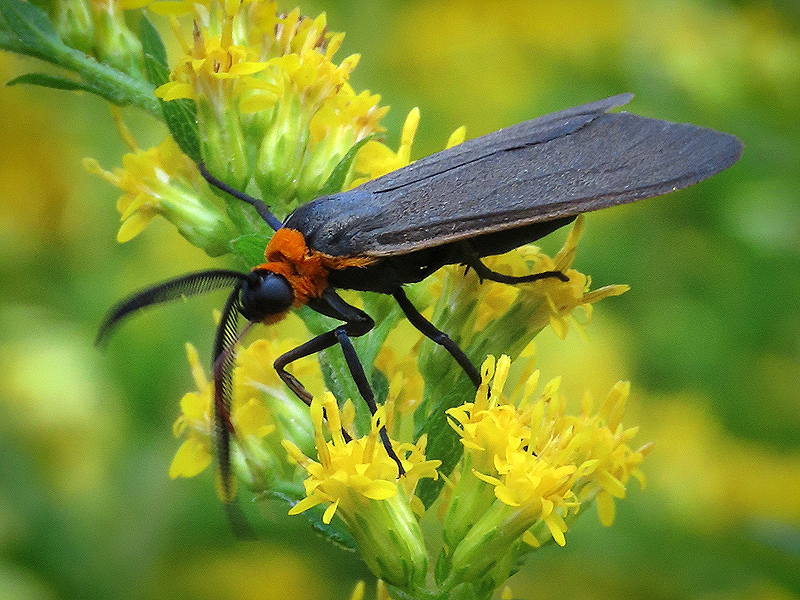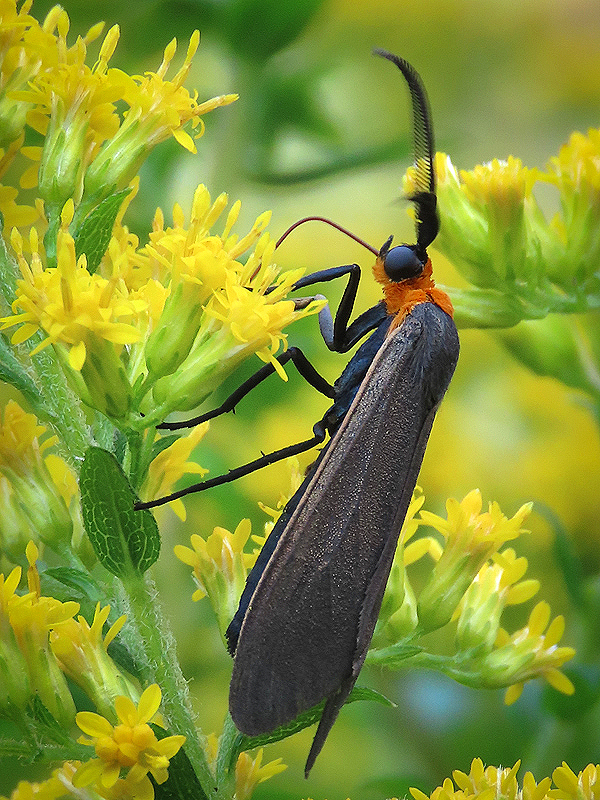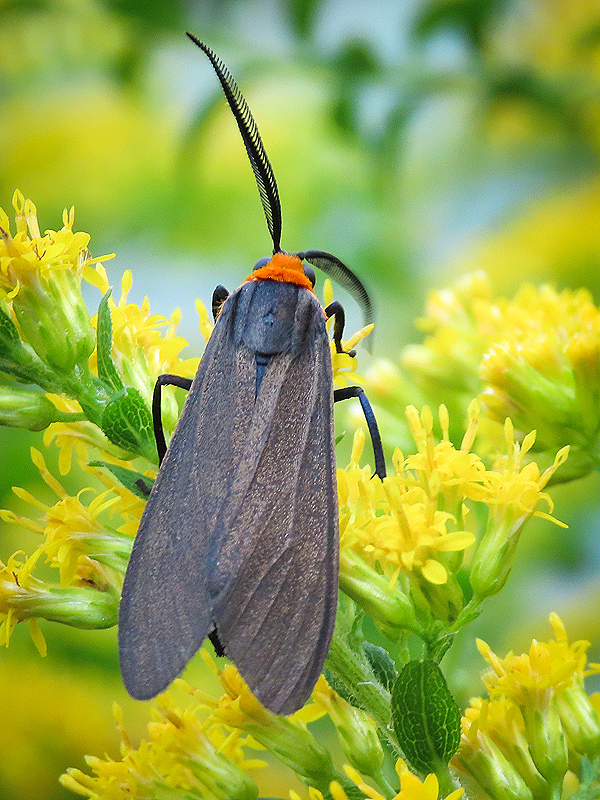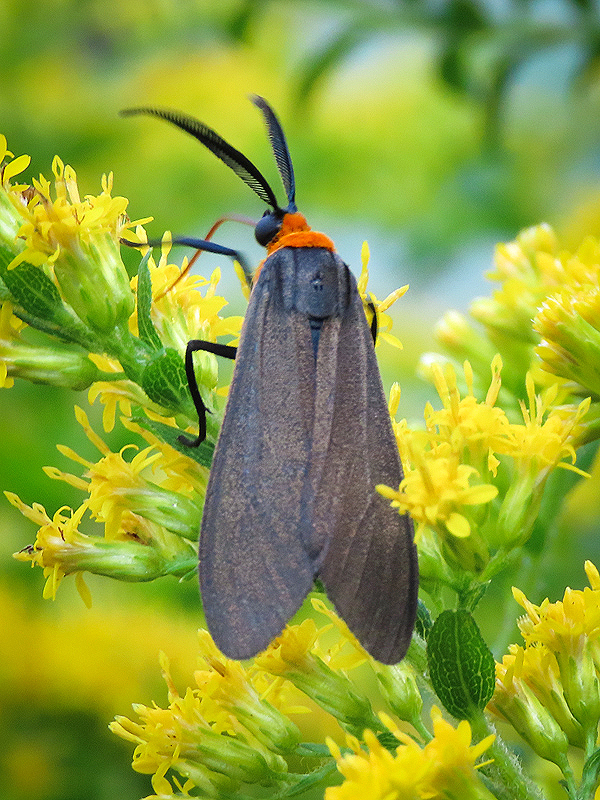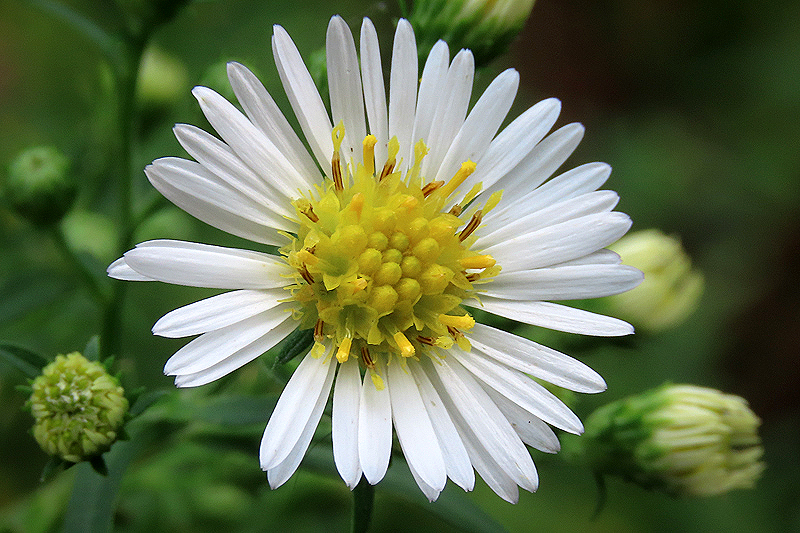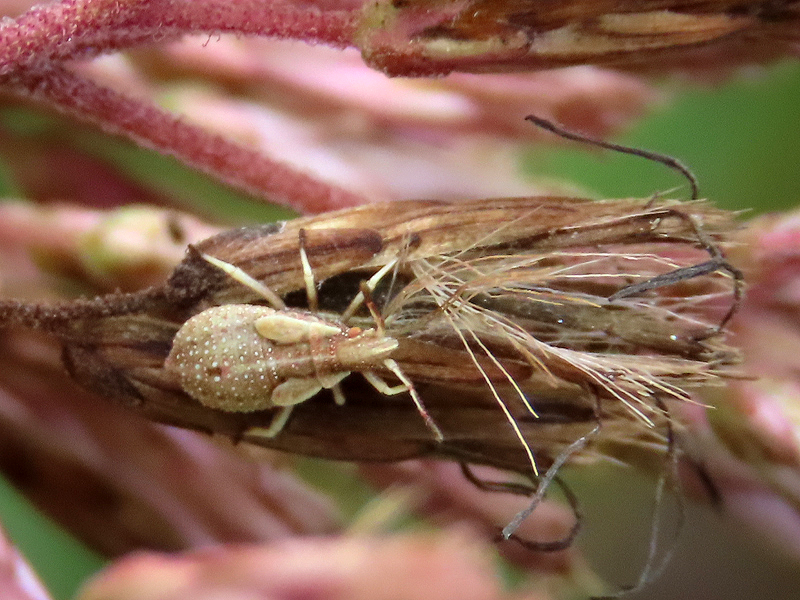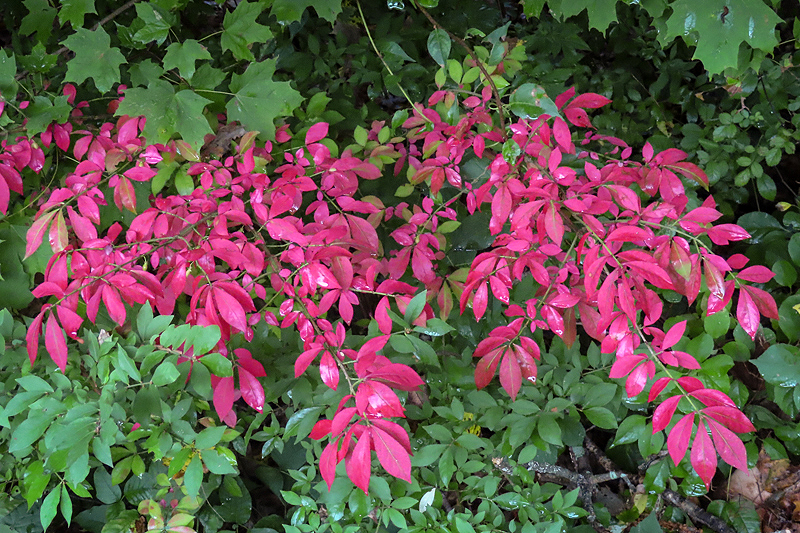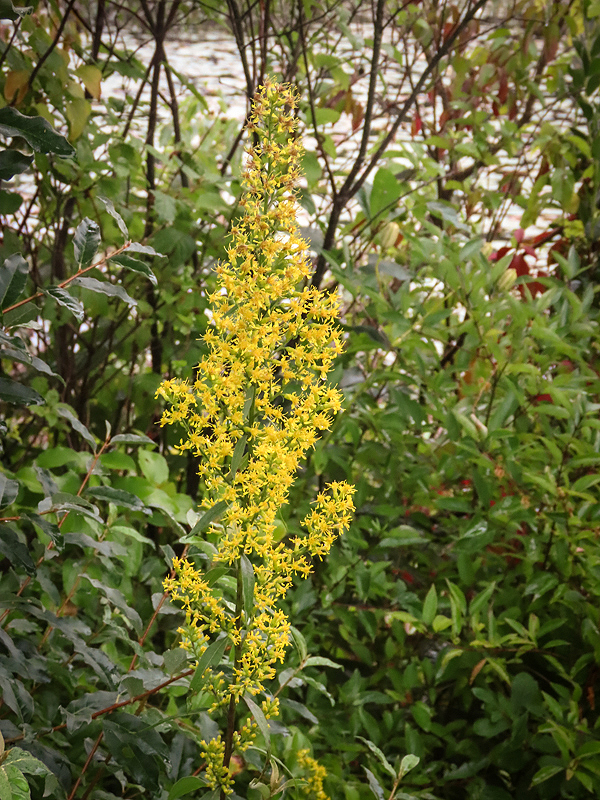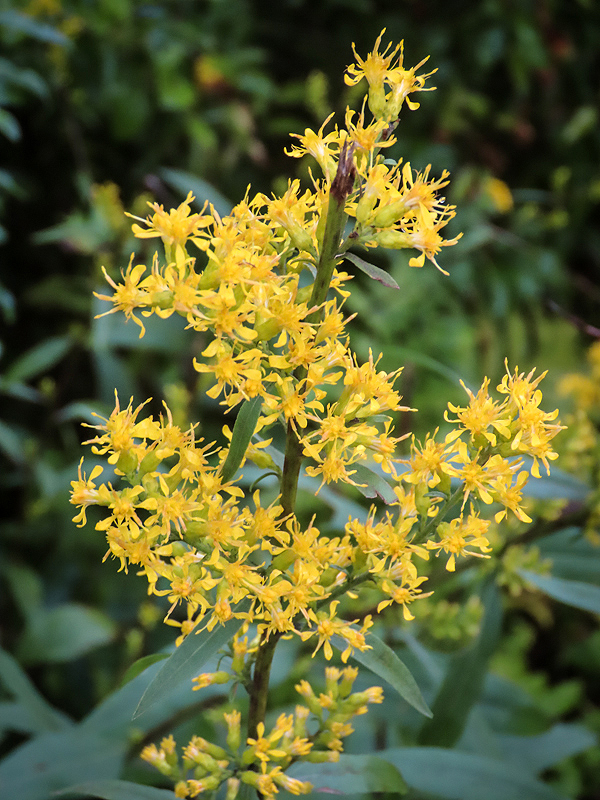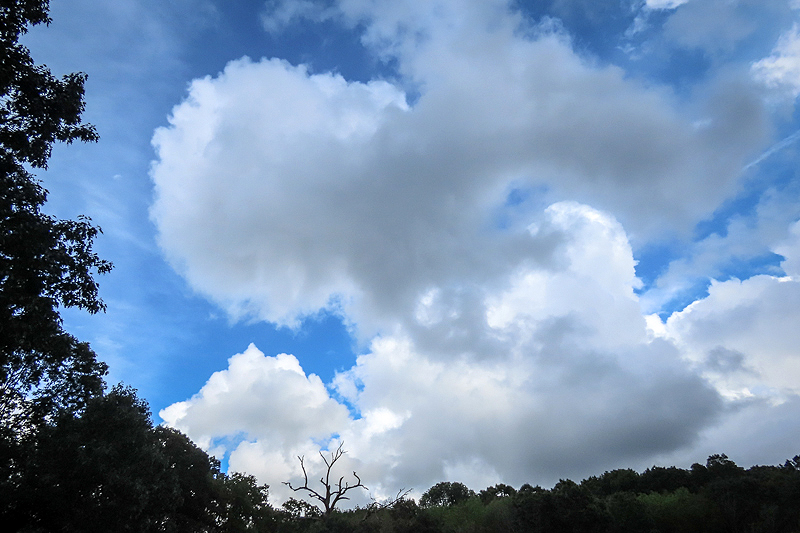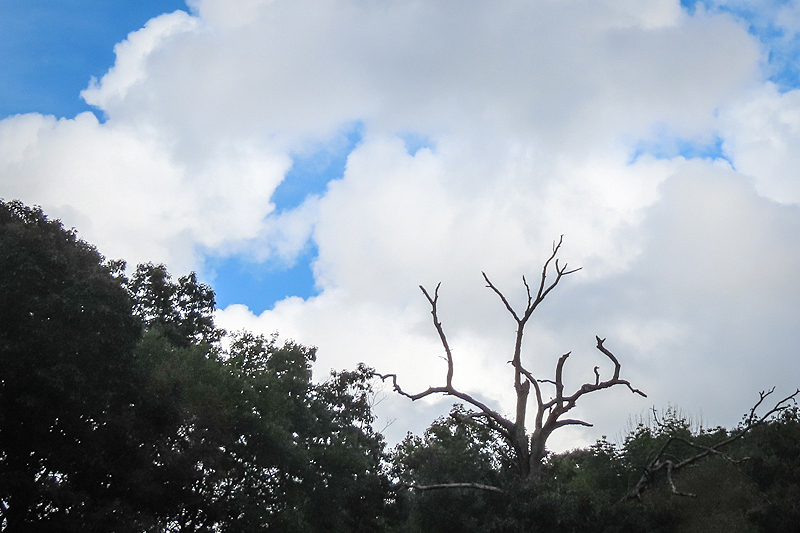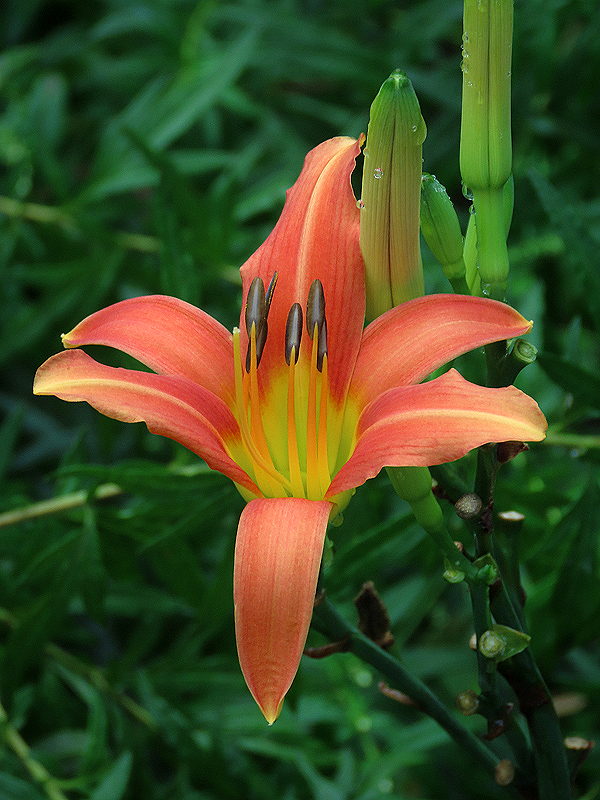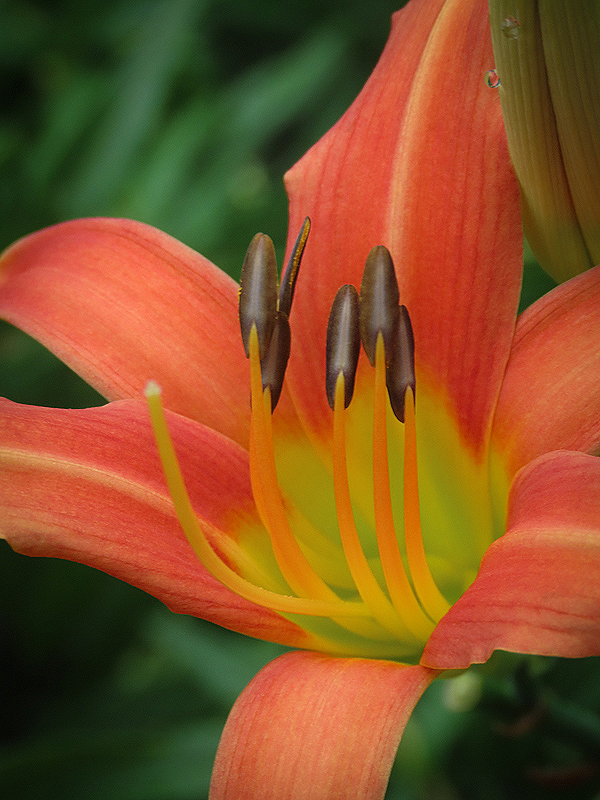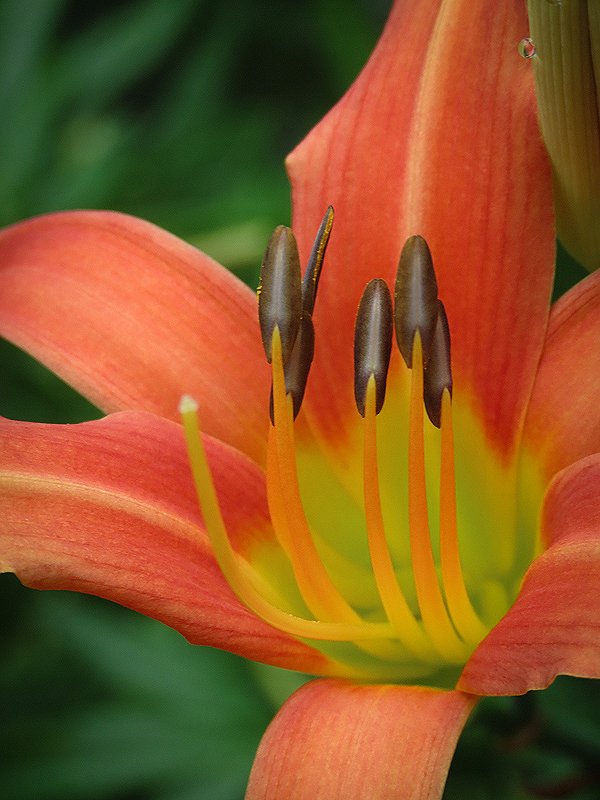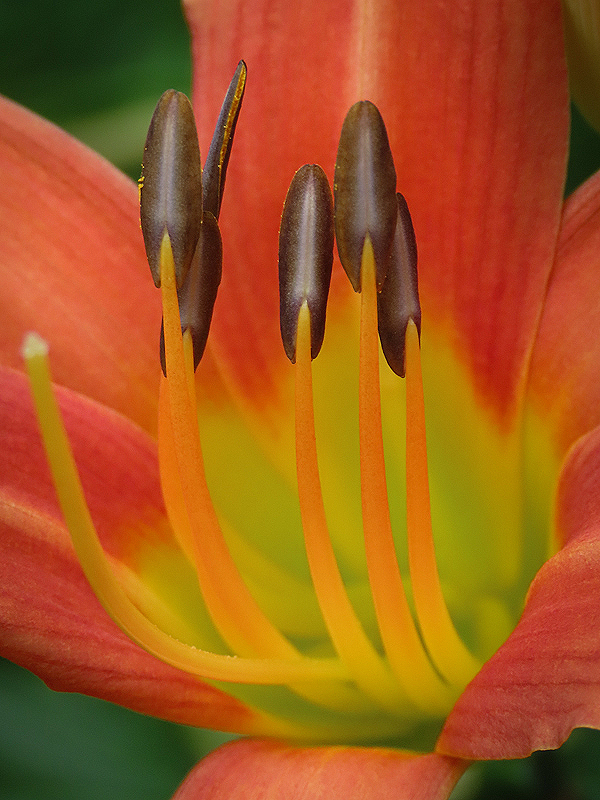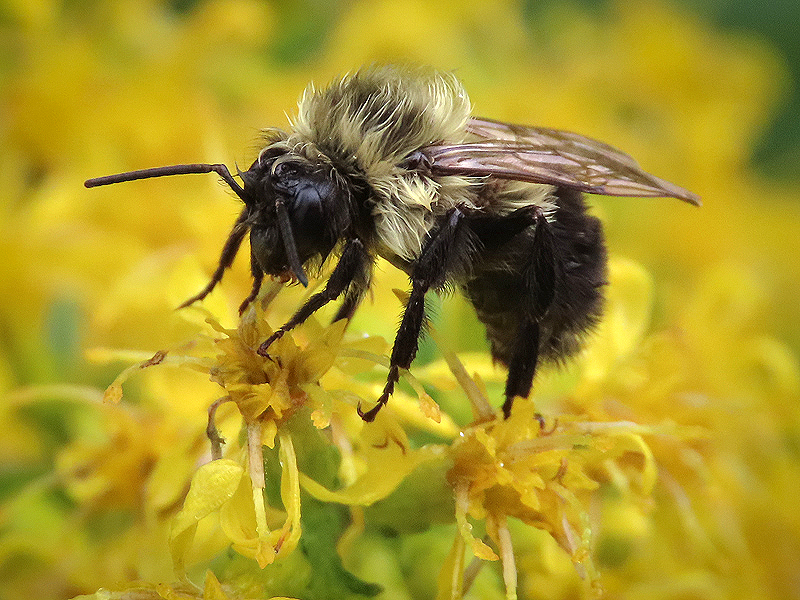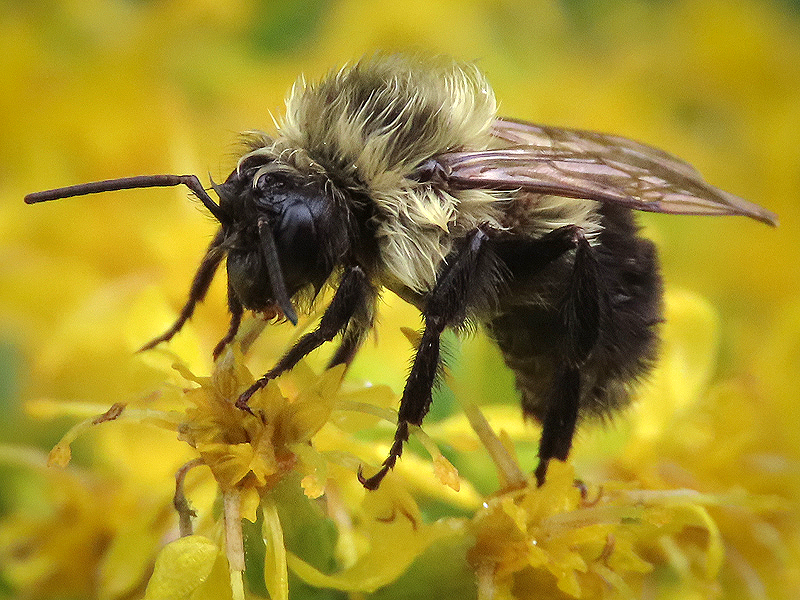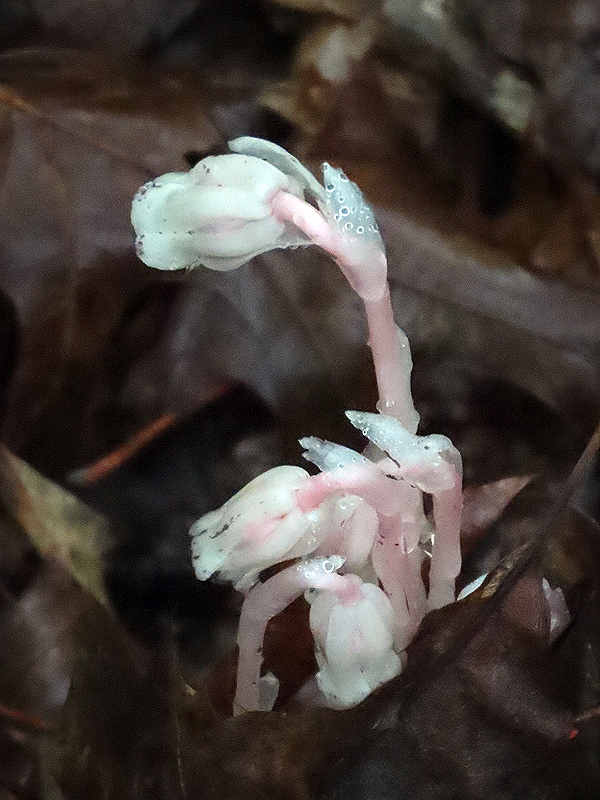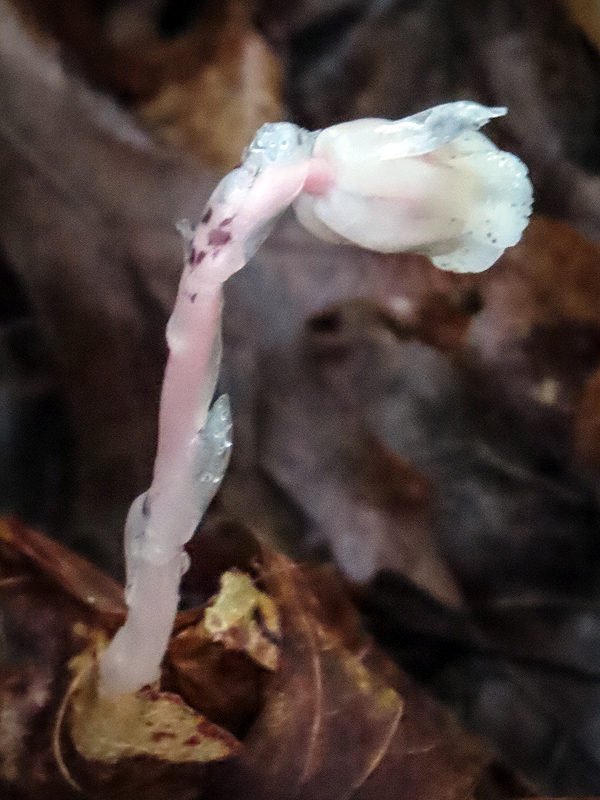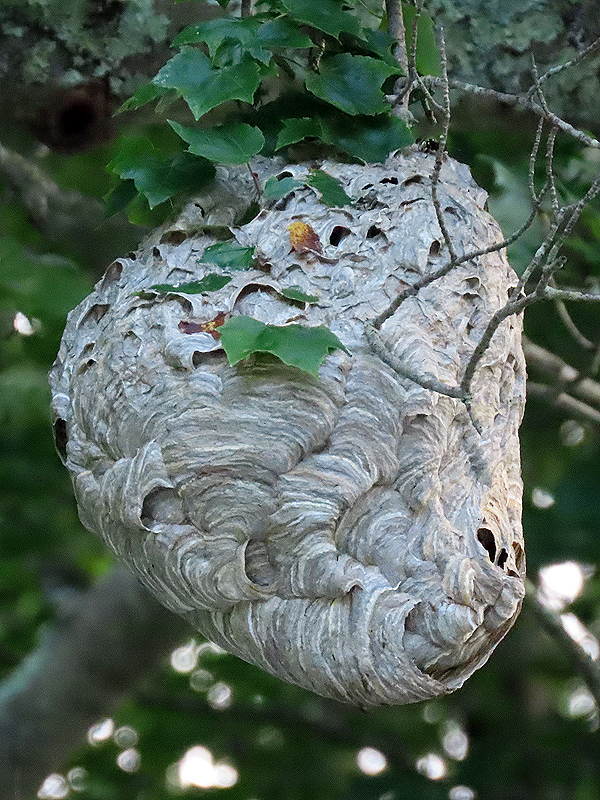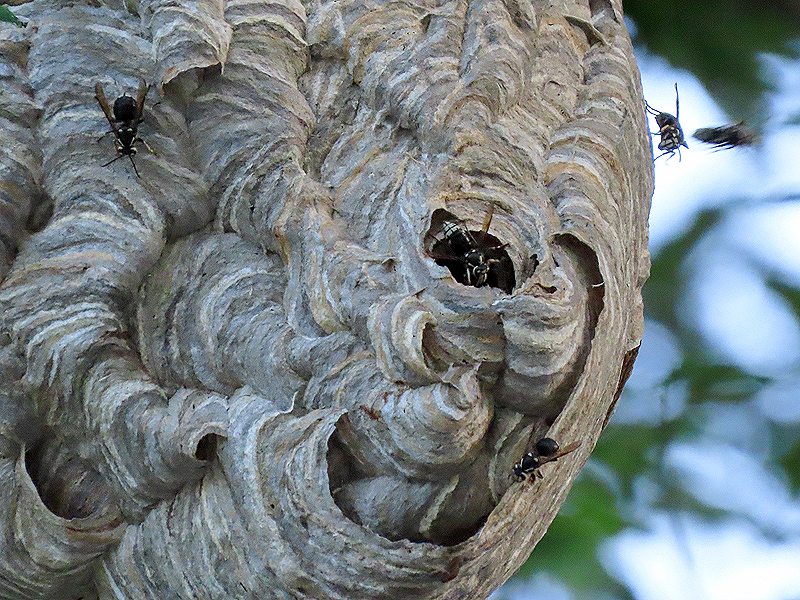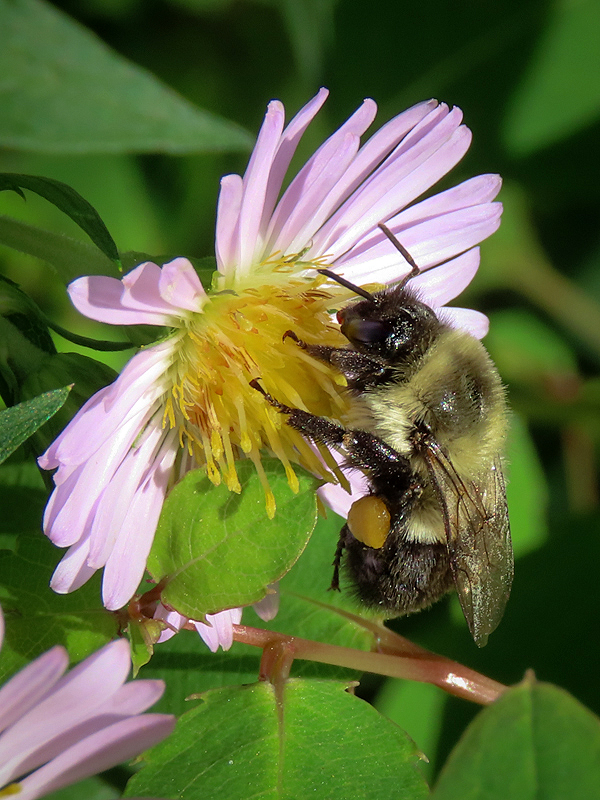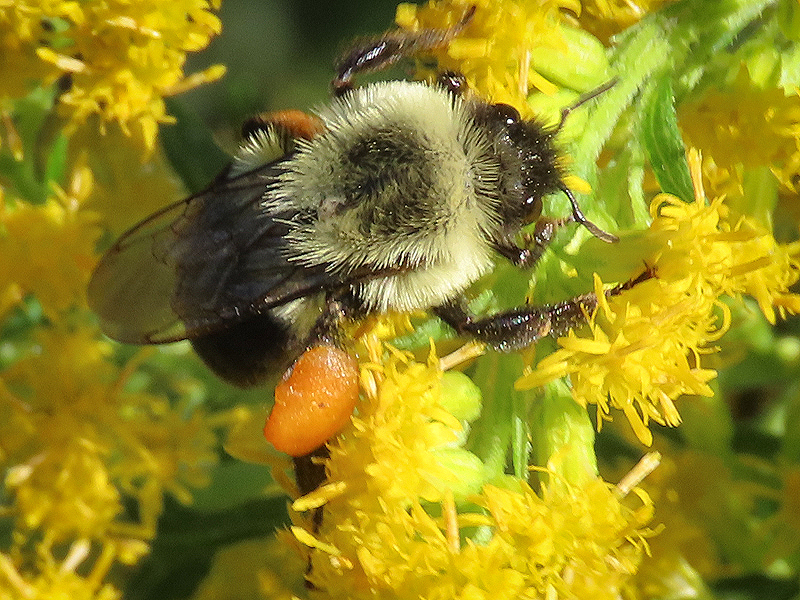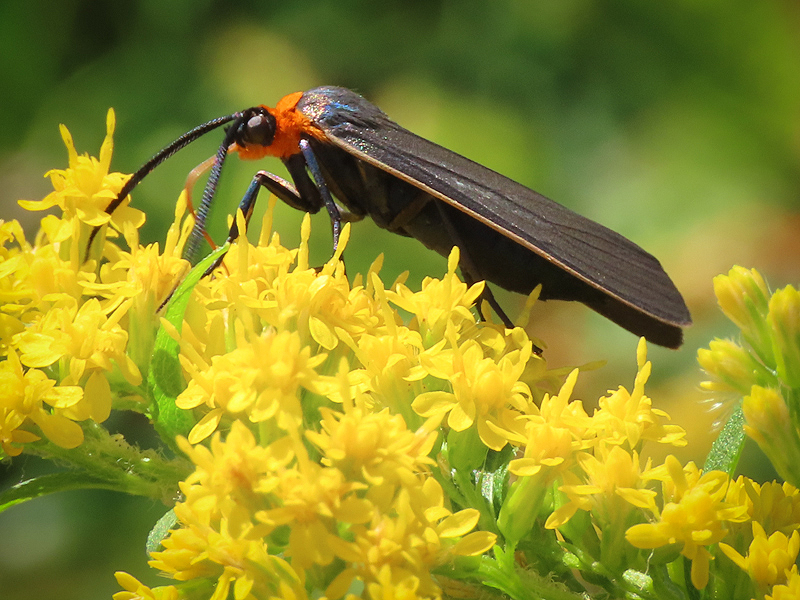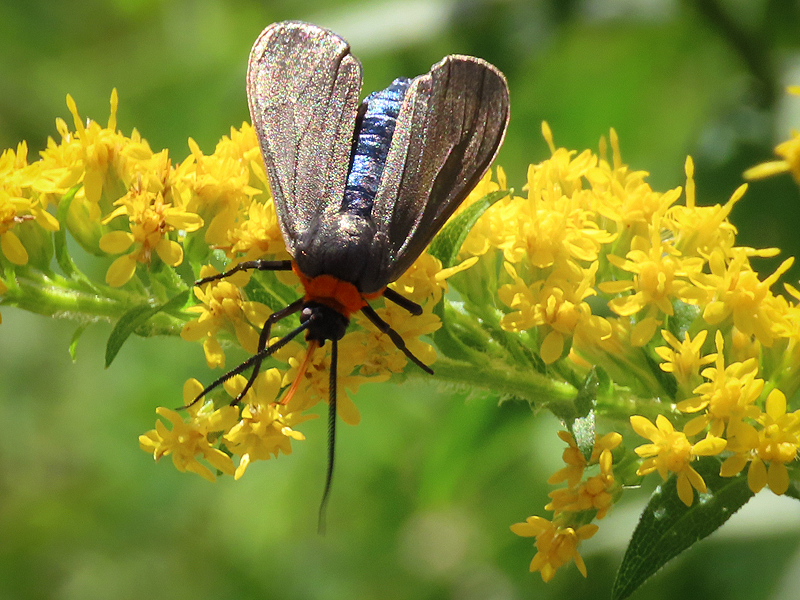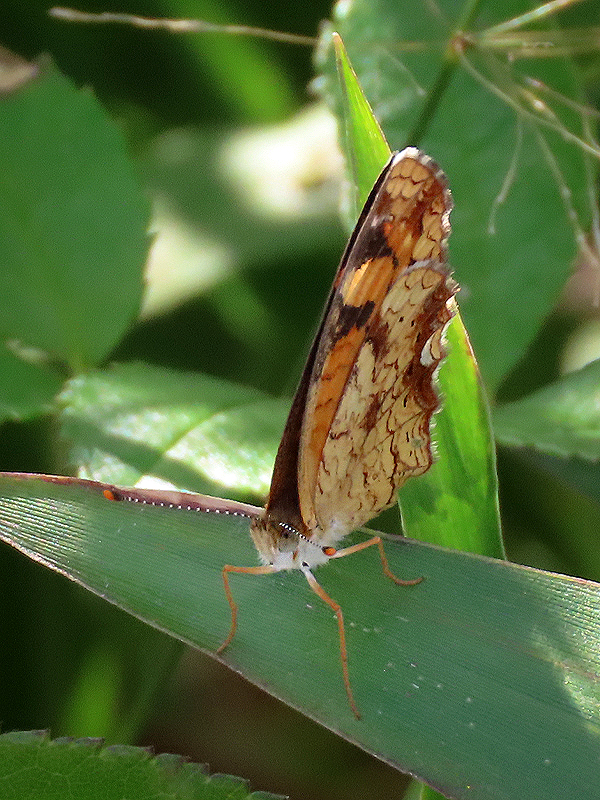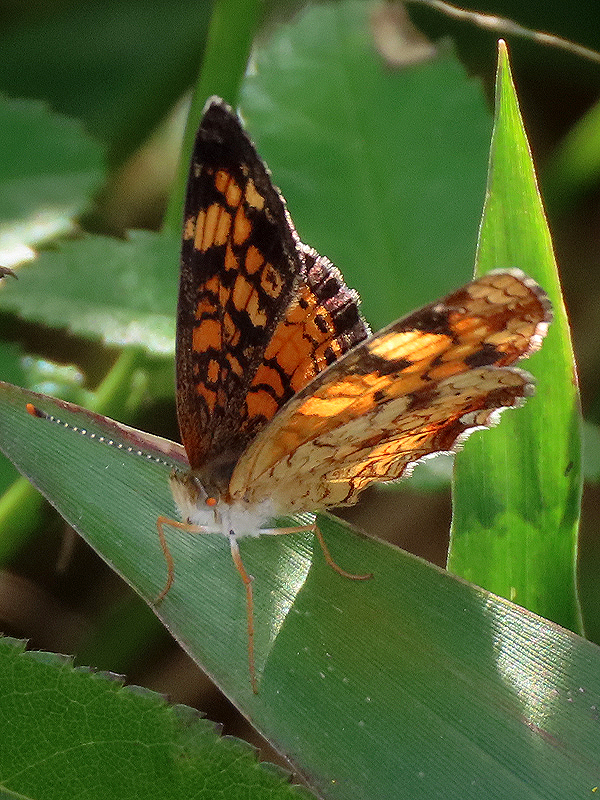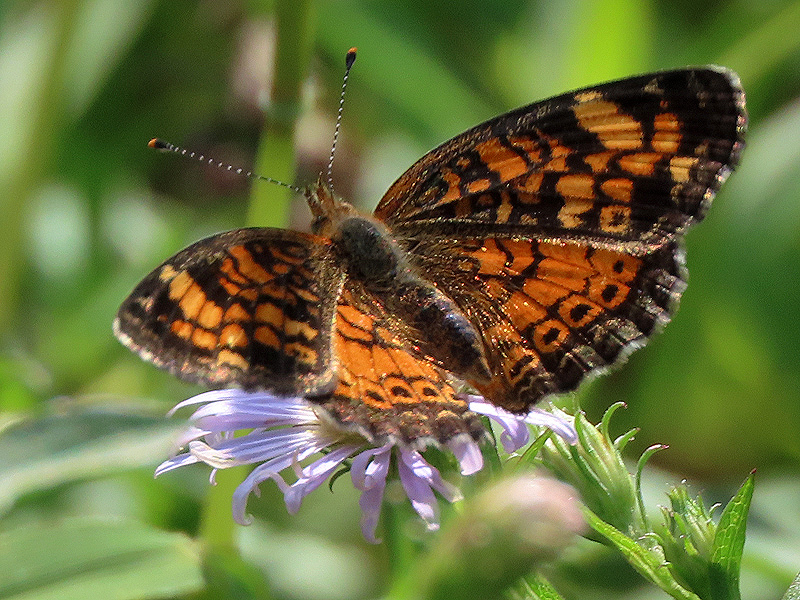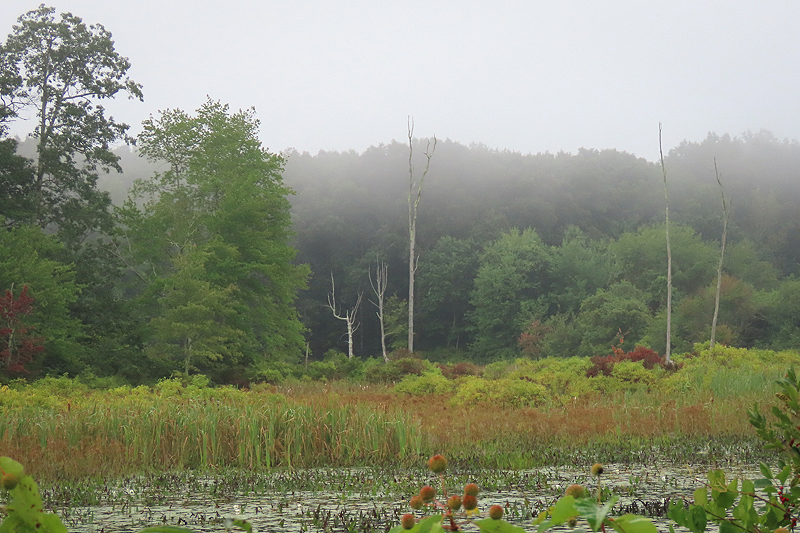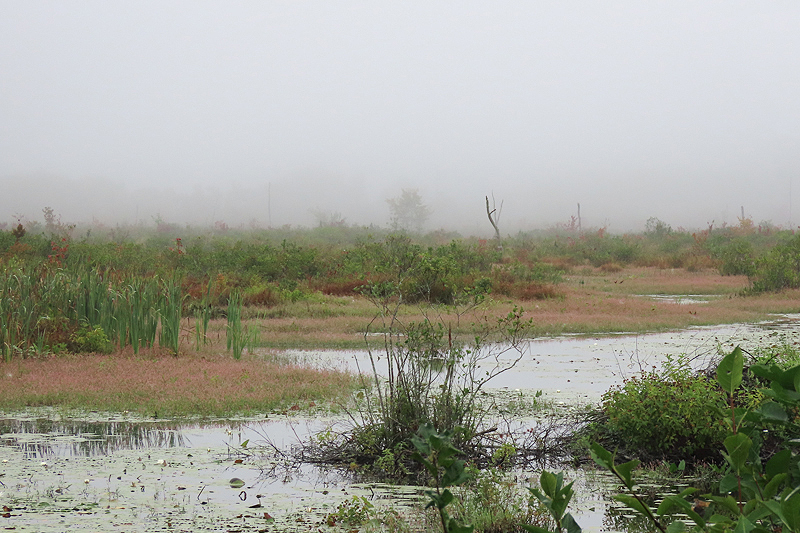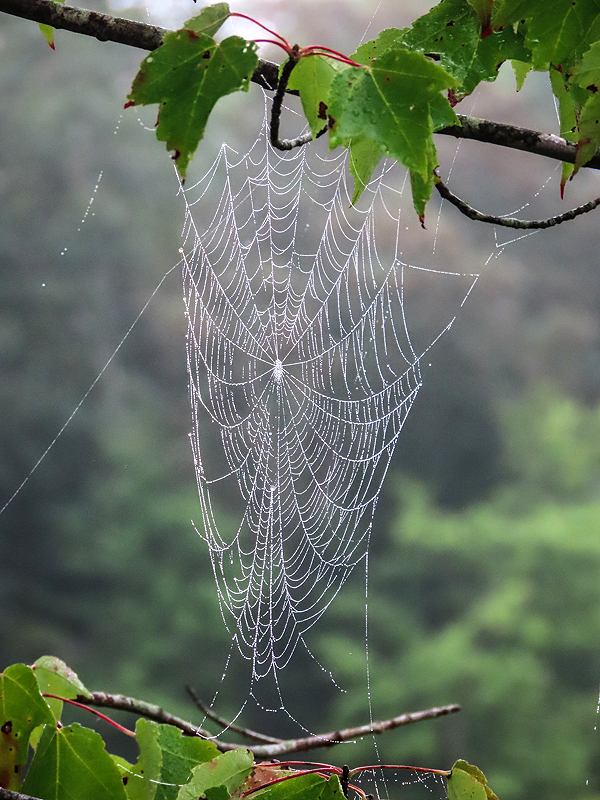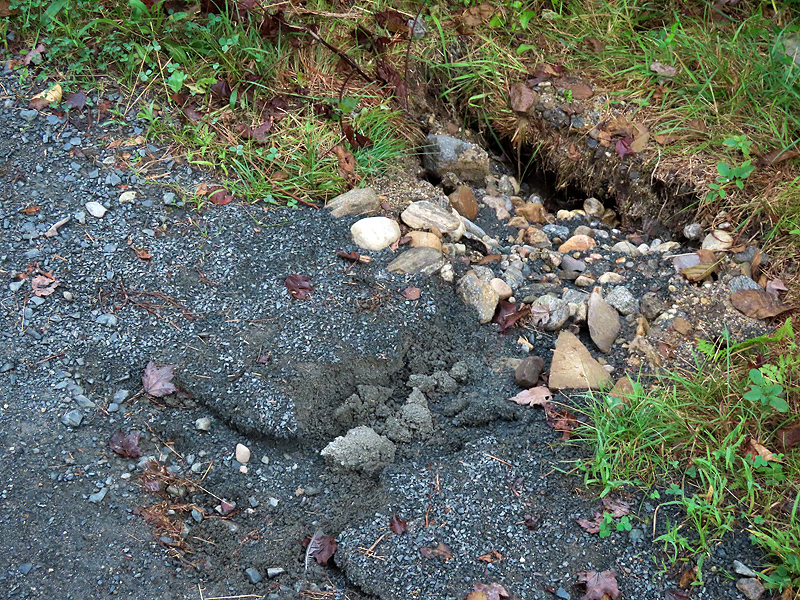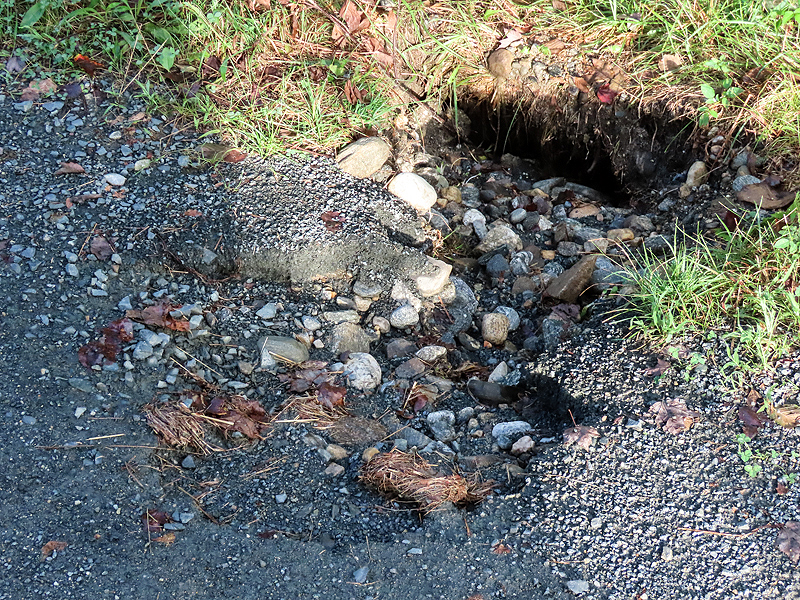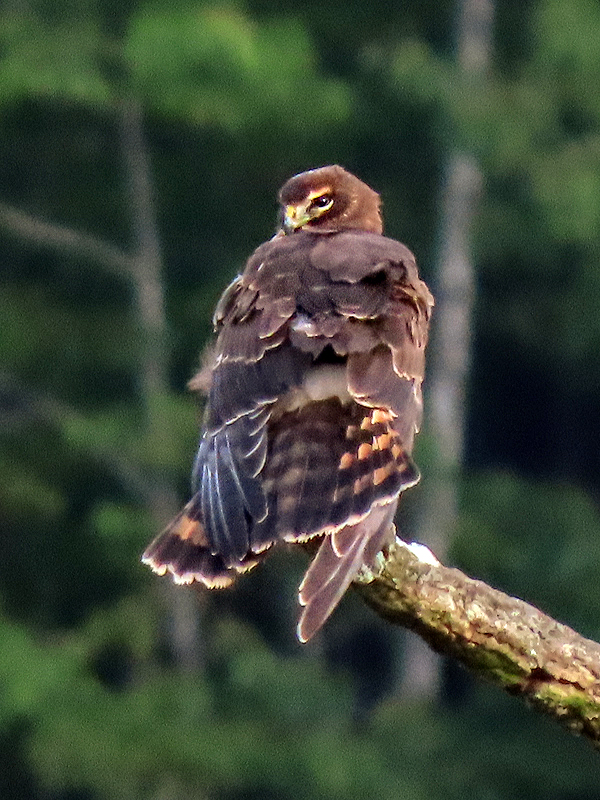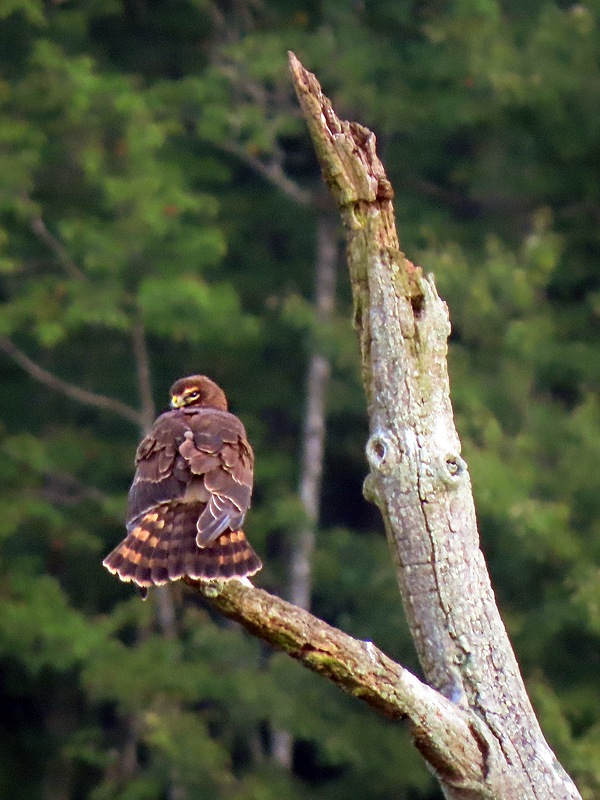Along the Air Line... 2023 - Summer, Part 15 The Air Line Trail in Eastern Connecticut - Stan Malcolm Photos |
HOME: Air Line... 2023 Pages Menu Stan's FlickR Albums |
September 9th. Yellow-collared Scape Moth (Cisseps fulvicollis). |
|
|
|
These and a few more photos of this moth are posted to a FlickR album: https://www.flickr.com/photos/stanmalcolm/albums/72177720311080598 |
Honey Bees (Apis mellifera) were working the Goldenrod (Solidago sp.). |
|
|
This bee has s nearly full load of pollen on its hind legs. |
A Thick-headed Fly (Family Conopidae, Physoconops sp.) |
One of the bushy early Asters. |
The beetle is a Shining Flower Beetle(Family Phalacridae). As an undergraduate work-study job in the late '60s, I was tasked with extracting the male genitalia of my boss' - and later my - study group, the Hydrophilidae. He gave me a vial with hundreds of little beetles which I dutifully began dissecting. I was well along in the job when he realized they were Phalacrids, not Hydrophilids. Argh! But at least I got paid for the work if not for the damage to my eyesight. |
I won't attempt to ID this true bug nymph. |
|
Fall color of the Burning Bush or Winged Euonymus (Euonymus alatus) has gotten more intense. |
Showy Goldenrod (Solidago speciosa) is distinct enough from other species in the genus that I feel confident in my identification. I don't recall ever seeing it at Raymond Brook Marsh before. |
|
September 11th. On a rainy afternoon, the sun came out so I headed to the trail. Nifty clouds. |
Unfortunately, as I headed west, conditions changed rapidly... |
...and I walked in pouring rain. (It doesn't show up in the picture.) By the time I got back to my truck, I was soaked. |
A dead Snapping Turtle (Cheldra serpentina) in the trail. Looks like a bike ran it over. |
October 12th. One Day-lily plant (Hemerocallis fulva) is still blooming at the Route 85 parking lot. |
|
|
|
|
The anthers are just starting to open and offer pollen. |
A bee-dragled Bumble Bee (Family Bombidae) probably spent the night on the Goldenrod (Solidago sp.) blossoms. |
Bad hair day. |
|
Indian Pipes (Monotropa uniflora). Parasitic on other plants. Lacks chlorophyll in flower, stem, and leaves. |
Monotropa is Greek for "one-turn", referring to the sharp bend at the top of the stem. |
An afternoon stop at Cranberry Bog in East Hampton. I hadn't seen this Great Blue Heron (Ardea herodias) in several weeks. |
It's the bird with the hole in its throat where the stub of its damaged tongue protrudes. |
Opposite the blue trash barrels and above the parked cars, look up and see a large nest of Bald-faced Hornets (Dolichovespula maculata). |
The wasps were very active. |
|
|
Honey Bees (Apis melliffera) were active... |
...as were Bumble Bees (Family Bombidae). |
|
Another Yellow-collared Scape Moth (Cisseps fulvicollis). |
Note the metallic blue abdomen. |
Pearl Crescent (Phyciodes tharos). |
|
|
September 13th. Low hanging fog ahead of thunderstorms and heavy rain expected later this morning. |
|
|
A DEEP crew repaired this sinkhole on July 3rd and 4th, but it washed out yesterday and no doubt will further wash out today. |
The Indian Pipes (Monotropa uniflora) have pushed up further through the leaf litter. |
September 14th. Scroll up to compare the view from this spot yesterday in the fog. Dramatic difference. |
As predicted, yesterday's heavy rain washed out more of the patch done by a DEEP crew on July 3rd and 4th. (See above to compare.) |
September 15th. Northern Harrier? (Circus cyaneus). |
|
|
Note the white rump. |
|
|

